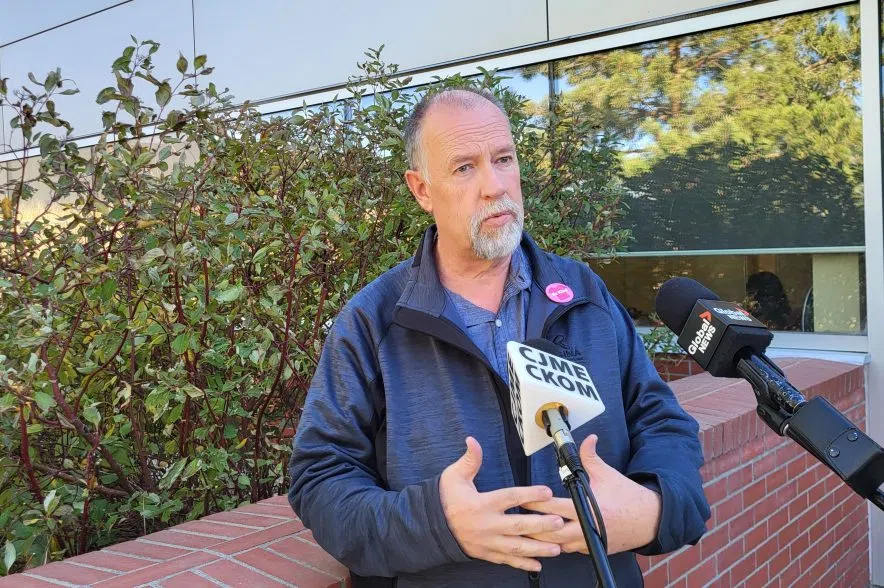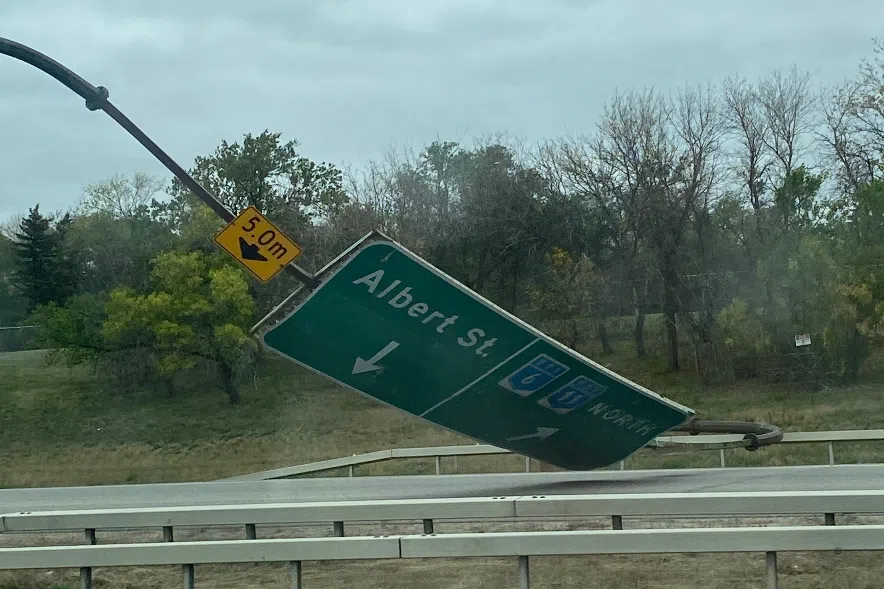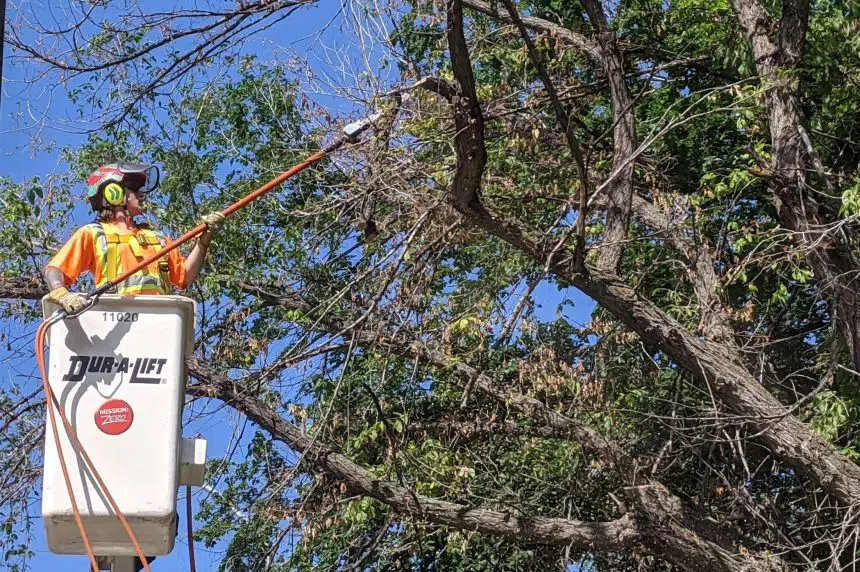Regina city crews are still working to clean up after Saturday’s wicked windstorm.
Russell Eirich, manager of open space services with the city, said staff began responding to calls about the wind at 8 a.m. on Saturday and worked until dark.
He said the city logged about 450 service requests by Saturday evening, though he noted that many were duplicates/or overlapping.
“We still have a lot of calls to get through,” he said on Monday.
Read more
- PHOTOS, VIDEO: Wild wind in Saskatchewan
- Roads, snow removal beat affordable housing in Regina city budget survey
“… Our priority for storm response is to try to get streets cleared first to ensure emergency access. If a tree is felled on a resident’s house, that’s next. If a tree is on a parked car, that’s what we do after that, and then we just start to do the broken branches and the general debris cleanup.”

Russell Eirich, manager of open space services for the City of Regina, says its too early to get an exact dollar figure for potential damage from the windstorm on Oct. 5. (Daniel Reech/980 CJME)
The city brought in 40 workers to help with the efforts on Sunday morning. By the end of the day, Eirich said workers had pruned 105 trees, 25 of which were removed.
Eirich said debris cleanup will take roughly a week.

A casualty of the wind in Regina on Oct. 5, 2024. This sign is on Ring Road, just before Lewvan Drive, in Regina. (Submitted)
Repairs to a sign near the on-ramp of Albert Street and Ring Road that was brought down by the wind were completed by 9 a.m. on Monday.
The city had placed detours and barricades while it was repaired, and Eirich said the city wasn’t aware of any accidents related to the sign.
Brad Vrolijik with Environment Canada said Saturday was one of the windiest days of the year, with speeds reaching as high as 98 km/h.
Eirich said these types of winds are unusual for October, and more likely to occur in summer.
The last remarkable windstorm Eirich remembers that affected the city to this extent happened roughly a decade ago, causing about 1,100 trees to be damaged.
Eirich says the cost of Saturday’s storm damage is still yet to be determined.

A City of Regina employee begins to cut down an elm tree that has been infected with Dutch elm disease. (Shane Clausing/980 CJME files)
Dutch elm debris needs to go to landfill
“Obviously, there’s more than just city trees, there are private trees, and so we anticipate that residents have seen some of their trees fell,” Eirich said.
“If you’ve got elm, take it out to the landfill, make sure it’s getting disposed of at the landfill and that’s just to help prevent Dutch elm disease next year.”
Eirich said Regina had lost 85 trees to the disease so far in 2024.
“Generally speaking, it’s spread throughout the province. It’s in Saskatoon and some of the other communities,” he said. “It’s made it as far north now as Edmonton, so I think you’re going to see higher levels of Dutch elm disease in the long run here.
“It’s going to become a little bit more of the norm, not something that we’re looking forward to, but it’s just becoming more endemic.”
The official policy of the city is to remove any infected trees. Neighbouring trees are injected with a fungicide, however Eirich said there no other options on the market that kill the beetles responsible for spreading the disease, as they have been deregistered by the federal government.
Read more











